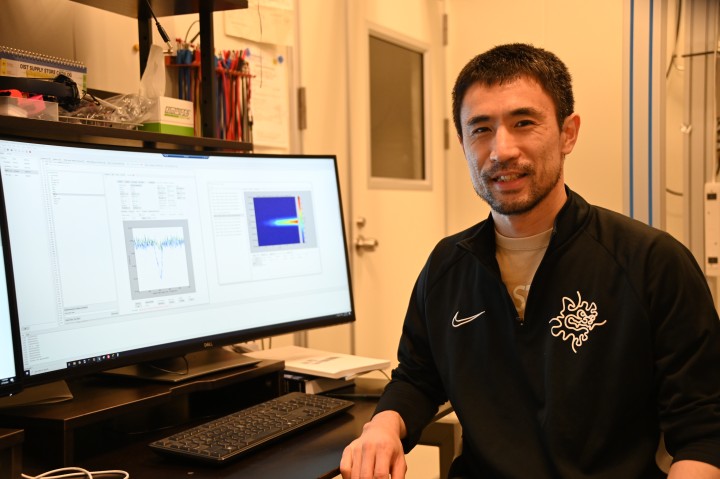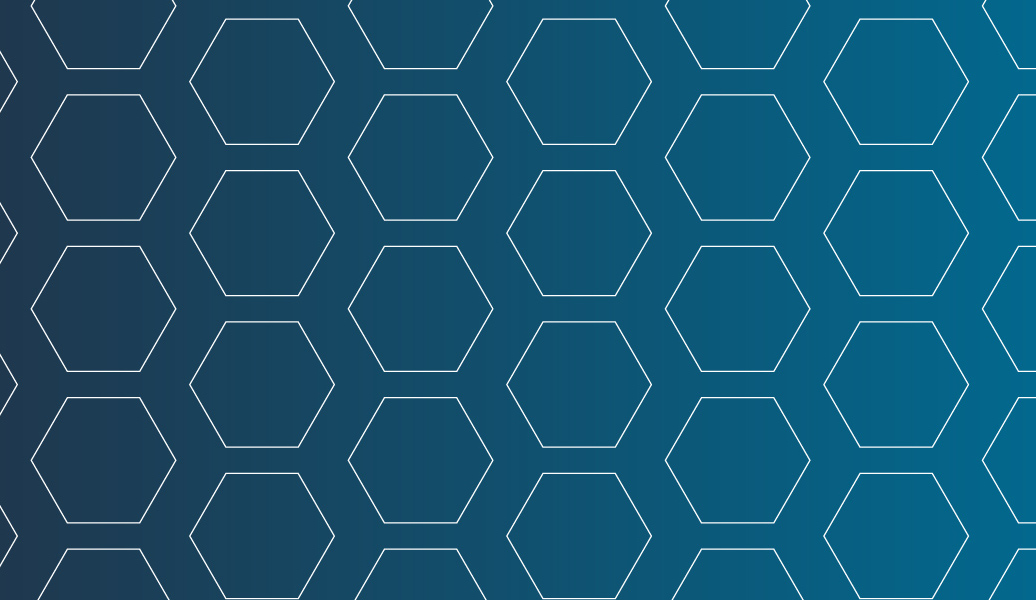Column: Creating connections

The latest OIST column in the Asahi Shimbun GLOBE+ is out now! This month, science writer Lucy Dickie interviewed Dr. Yuimaru Kubo about his research designing a quantum transducer and his advice for young scientists.
The article is in Japanese, but the original English version can be read below.
Creating connections
One scientist’s quest to contribute to a universal quantum network.

Across the world, one piece of research at a time, a quantum network is being developed, which will be powerful, efficient, and 100% secure. It will allow quantum computers to communicate with each other and complex equations to take place at a scale that just isn’t possible today. But, for this to become a reality, all the pieces of the network first need to be realized and created.
One of the scientists working on this network is Dr. Yuimaru Kubo from the Okinawa Institute of Science and Technology Graduate University (OIST). As part of his work, Yui is a performer in a project led by Professor Takashi Yamamoto from Osaka University. Last year, this project received a prestigious award through the Moonshot Research & Development Program within JST. Their goal is to develop a quantum transducer – a vital part of a quantum computer network.
In early 2021, I sat down with Yui to talk about the project, and to hear about his background and what he hopes the future holds for quantum engineering in Japan.

Q. What is a quantum transducer?
A. It’s a necessary part of a quantum network. In the future, we want quantum computers to be distributed across many places and connected by optical fibers. The quantum transducers will help quantum computers to communicate with each other, to send quantum information to another computer in a different place.
One quantum transducer will take an electric signal from the computer and transform it into an optical signal. This signal will then be transferred across a long distance, and another transducer will take the optical signal and transform it back to an electric signal.
Q. How do quantum transducers work?
A. Each transducer will work bi-directionally. For my research, I’m using a piece of artificial diamond crystal, which contains impurities of spins. These spins will contribute to the conversion. It’s still very much theoretical at the moment, but researchers overseas have created proof-of-concept demonstrations.
It’s very exciting to be part of this project, which ultimately seeks to create a universal quantum computer and quantum network.
Q. Why do we need a quantum network?
A. Once you have a quantum computer, you need to think about connecting to a network, just like what we do with our regular computers and the internet. A quantum computer network must have 100% conversion efficiency so it can preserve all information. The network will also be very secure, so no one will be able to hack into it.
Q. What’s the end goal of all this quantum computer research?
A. We’ll have a network of quantum computers that will very powerful with particular tasks, such as factorization and complex calculations, which make normal computers freeze. These will be used by institutions throughout the world.
But that’s not all… as the history of basic research and industrial development tells us, there will undoubtedly be many more exciting and surprising outcomes in this research. We cannot predict these now but will come to realize them in the future. A good analogy is the semiconductor and laser industry. Today, these devices are used everywhere – in cars, phones, and even surgical operations. No one could have predicted this when they were just being created.
Becoming a scientist
When he finished high school, Yui, who grew up in Kanagawa, was unsure of what he wanted to do, so he chose a broad degree in Engineering Science.
“Initially, I was drawn towards applied research. I think that science that can directly lead to applications is cool. But I found that I also enjoy basic, fundamental physics, so I seek to have a combination of both.”
After completing a PhD in material science and quantum physics, Yui moved to France for six and a half years for a postdoctoral fellowship. When he decided to return to Japan, he had a choice between two job offers. Yui’s mother is from Okinawa so Yui decided to move to the southernmost prefecture as he wanted to contribute to Okinawa in some way.
“My name – Yuimaru – comes from an old Okinawan word,” Yui explained. “Yui, you’ll find in many places around the island, it means to connect. Yuimaru means to connect people, so we can help each other. It’s an important concept on this island. It’s helped us to survive.”
As a quantum engineer, Yui splits his time between his desk, where he can be found doing calculations, and drawing up designs, and the laboratory, where he builds his devices.

“Some of these devices that I’m demonstrating in proof-of-concept may lead to actual products in quantum computers,” said Yui. “I find this so exciting. I really like realizing new quantum devices.”
“Japan has a rich recent history of quantum research. In fact, the first artificial quantum system was invented in Japan. This was demonstrated by a researcher at NEC and published in Nature in 1999. I hope we can continue this success into the future.”
His advice for Japanese high school students who are considering a career in science… “I think it’s very important to follow your intuition. Then find a topic that you think is cool and pursue that. Don’t hesitate to try new things, and to explore new places and countries.”














